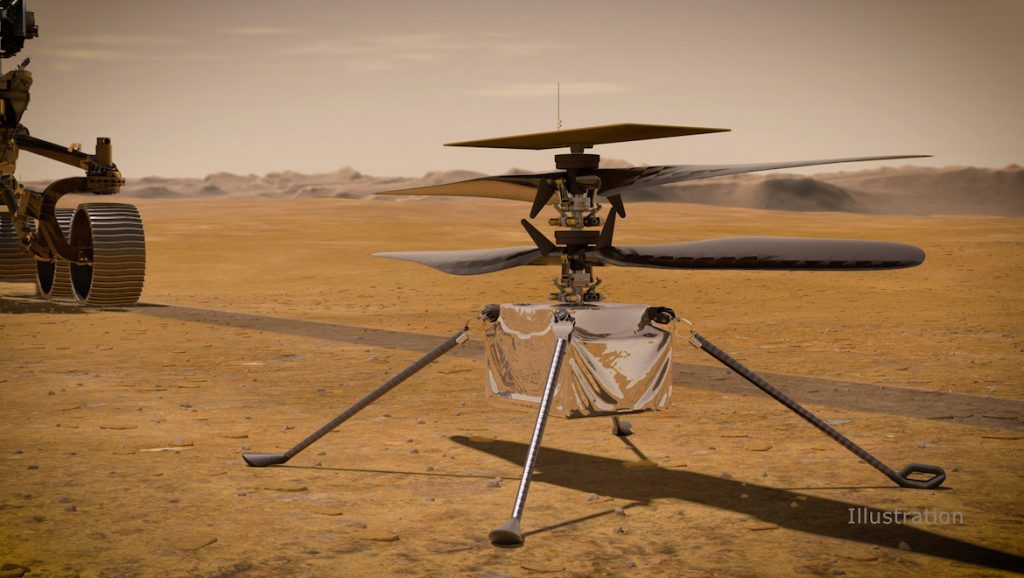
NASA’s Ingenuity Mars Helicopter has successfully completed its seventh successful flight on the Red Planet entirely as planned, following an in-flight technical glitch that occurred on its sixth attempt last month, according to the space agency.
The Ingenuity rotorcraft took off at roughly 12:34 local solar time (11:54am EDT), where it flew a total of 106 metres south from its starting location, to a brand new landing spot. The flight lasted a total of 62.8 seconds, according to NASA.
The space agency’s Jet Propulsion Laboratory later Tweeted that Ingenuity had performed exactly as programmed for its seventh flight, following a minor malfunction during its previous one.
From a helicopter team member: "No anomalies in flight 7, Ingenuity is healthy!"
— NASA JPL (@NASAJPL) June 9, 2021
Apart from the tweet, NASA is yet to release detailed information on the flight.
The news was likely a welcome relief to the JPL team, following an unplanned “anomaly” that occurred during the rotorcraft’s sixth flight
On 23 May, the aircraft took off at 1:20 am (EDT). It was supposed to attain an altitude of 33 feet, travel 429 feet to the southwest, and then move 49 feet to the south, simultaneously taking photos towards the west.
However, the aircraft suffered a glitch that interrupted the flow of images from its navigation camera to its computer. The glitch saw Ingenuity lose a single image, which consequently resulted in all other images to be delivered with incorrect timestamps, according to Håvard Grip, Ingenuity Mars Helicopter chief pilot at NASA’s JPL.
“Ingenuity began adjusting its velocity and tilting back and forth in an oscillating pattern. This behaviour persisted throughout the rest of the flight,” he said.
This forced the mission team to address the timing vulnerability issue for future flights. However, the success of the seventh flight proves these problems have been resolved.
Ingenuity is a solar-powered rotorcraft vehicle that boasts twin propellers, a metallic body, four legs, and weighs just under two kilograms (on Earth).
It was sent aboard NASA’s Perseverance Mars rover in February to complete one mission: prove that it could fly in Mars’ atmosphere, which varies significantly from that of Earth.
While Mars has much less gravitational pull than Earth, its atmosphere is just 1 per cent as dense, making it difficult to generate lift.
As such, the engineers of Ingenuity gave the aircraft four-foot long rotor blades that spin at higher speeds than would be required on Earth.
Last month, during Ingenuity’s fourth test flight, NASA was able to record the first-ever audio clip of an aircraft in flight on another planet.
Following the rotorcraft’s fifth test flight, NASA confirmed its Perseverance rover on Mars was able to use its SuperCam microphone to record the rotorcraft buzzing through Martian skies during its previous flight.
The rover was parked around 80 metres from Ingenuity’s take-off and landing spot, and mission control was unsure if the noise of the rotorcraft’s blades, which spin at 2,537 rpm, would be audible over the sounds of the Martian gusty atmosphere.
However, scientists were able to isolate the sound of Ingenuity, to better hear the hum of Ingenuity above the winds.
Listen here:











